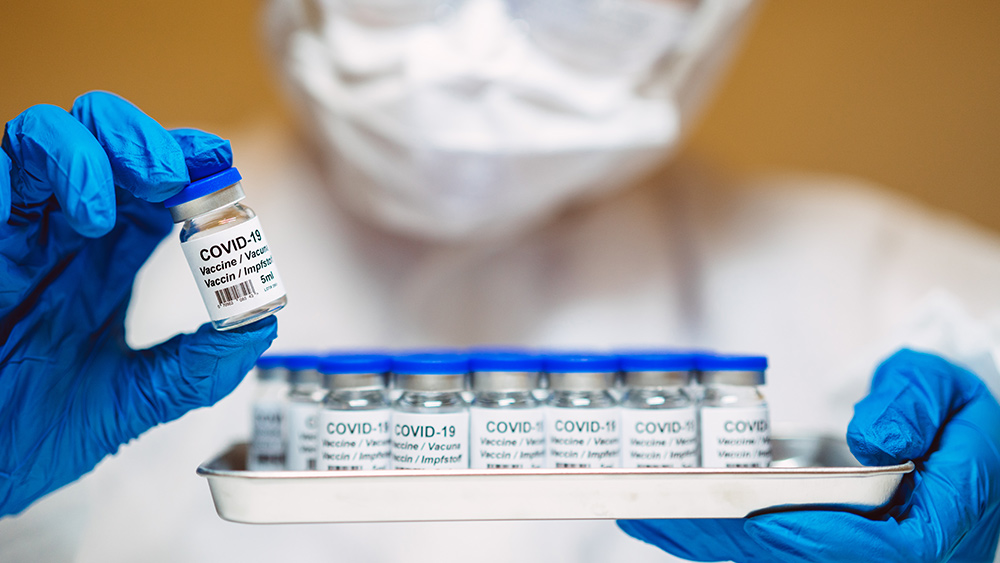 Parler
Parler Gab
Gab
Modern science explains black cumin's healing properties
The potency of N. sativa as a medicinal herb lies in its complex and diverse phytochemical composition. However, this composition can vary depending on the region where the plant is grown, its maturity, processing methods and extraction techniques. The bioactive compounds in black cumin, which are responsible for its wide range of healing properties, can be classified into several chemical groups:Terpenes and terpenoids
The largest and most significant group of chemicals in black cumin seeds are terpenes and terpenoids. Among these, thymoquinone (TQ) stands out as the most researched and potent compound. TQ and its derivatives – including alpha-pinene, carvacrol, thymol and thymohydroquinone – are known for their anti-inflammatory, antimicrobial antioxidant properties. These compounds are largely responsible for black cumin's versatility in treating various health conditions – from inflammation to respiratory issues.Phytosterols
The oil extracted from black cumin seeds is rich in phytosterols, particularly beta-sitosterol, which makes up about 44 to 54 percent of the total sterol content. Other important sterols include campesterol, delta-7 avenasterol and stigmasterol – key players in lowering cholesterol levels and promoting heart and cardiovascular health.Alkaloids
Black cumin seeds also contain several alkaloids, which are bioactive compounds known for their medicinal effects. The major alkaloids include nigellicimine, nigellicimine-N-oxide, nigellicine and nigellidine, which have been linked to benefits in lipid (fat) metabolism and possess anticancer and neuroprotective properties – further enhancing black cumin's medicinal reputation.Tocols (vitamin E)
Black cumin is a rich source of tocopherols, a family of compounds that make up vitamin E. Tocopherols are powerful antioxidants that protect cells from oxidative damage and prevent lipid peroxidation. Black cumin contains four tocopherol isomers – alpha-, beta-, delta- and gamma-tocopherols – with gamma tocopherols being the most abundant. The high tocopherol content contributes to black cumin's role in preventing chronic diseases linked to oxidative stress, such as cancer and heart disease.Polyphenols
Black cumin seeds are packed with polyphenols, a class of antioxidants that combat oxidative stress and inflammation. Nineteen polyphenols have been identified in black cumin, including caffeic acid, chlorogenic acid, ferulic acid, kaemferol and quercetin. Among these most studied polyphenols, kaempferol and quercetin are found in the highest concentrations and are known to protect against diseases like cardiovascular problems, osteoporosis and certain cancers. Kaempferol, in particular, has been shown to inhibit the oxidation of low-density lipoproteins (LDL) or bad cholesterol – helping to prevent arteriosclerosis.Miscellaneous compounds
In addition to its primary phytochemical groups, black cumin seeds contain a variety of other beneficial compounds. These include special carbohydrates (such as arabinose, rhamnose and xylose), glycerolipids (mono-, di- and triacylglycerols), phospholipids and vitamins, such as vitamin C and several B vitamins (thiamine, riboflavin, pyridoxine and folic acid). Black cumin seeds also contain important minerals, such as calcium, iron, magnesium, potassium and zinc, and minor amounts of alkane hydrocarbons – further enhancing its role as a well-rounded natural remedy. While black cumin's traditional uses have been well-documented, modern science has begun to reveal the mechanisms behind its healing powers. The seed's essential oil, in particular, contains a range of powerful compounds – with thymoquinone being the most studied. Other active components, such as alpha-hederin, carvacrol, nigellicine, nigellidine, thymohydroquinone and thymol, also contribute to its pharmacological effects – giving it a wide range of therapeutic benefits. Though its food value is often overlooked in scientific literature, black cumin seeds are rich in both macro- and micronutrients. They provide significant amounts of proteins and healthy fats, particularly essential fatty acids like linoleic and oleic acids vital for heart health. Additionally, black cumin contains the vitamins and minerals previously mentioned – making black cumin not only a medicinal herb but also a nutritionally valuable food source. Watch this video about eight surprising health benefits of black cumin seed oil, a versatile medicinal oil. This video is from the Natural News channel on Brighteon.com.More related stories:
Black cumin seed: The ultimate medicine from Mother Nature. 10 Medicinal uses of black cumin seed oil. Black cumin: Healing people for thousands of years. Sources include: NCBI.NLM.NIH.gov 1 NCBI.NLM.NIH.gov 2 NCBI.NLM.NIH.gov 3 Brighteon.comSurvival basics: How to stay safe if you get stuck in a riot
By Zoey Sky // Share
Superfood pomegranate helps fight cardiovascular diseases, diabetes and cancer
By Olivia Cook // Share
Lifestyle habits to adopt now for a longer, healthier life
By Olivia Cook // Share
Power of FRANKINCENSE: This ancient resin fights inflammation and offers many health benefits
By Olivia Cook // Share
Governments continue to obscure COVID-19 vaccine data amid rising concerns over excess deaths
By patricklewis // Share
Tech giant Microsoft backs EXTINCTION with its support of carbon capture programs
By ramontomeydw // Share
Germany to resume arms exports to Israel despite repeated ceasefire violations
By isabelle // Share










